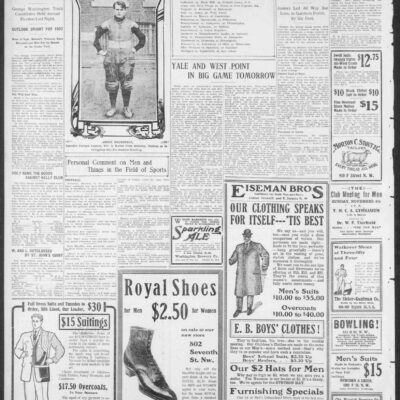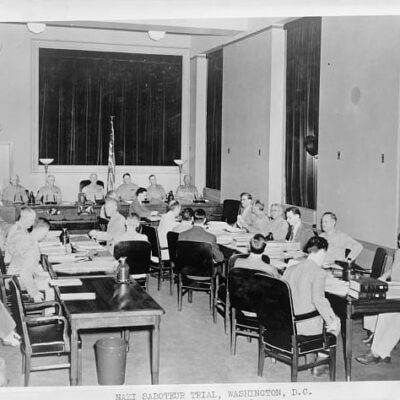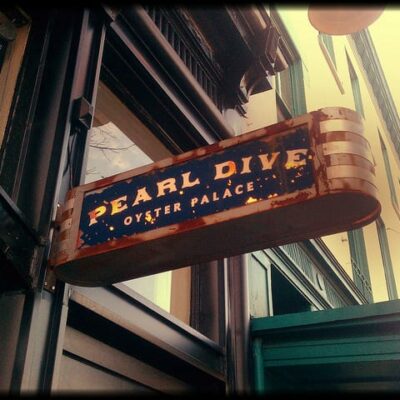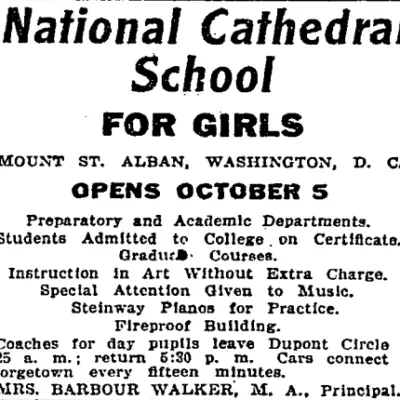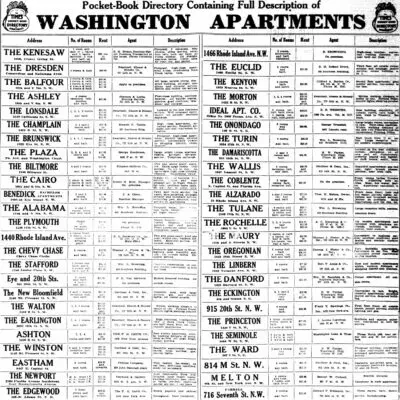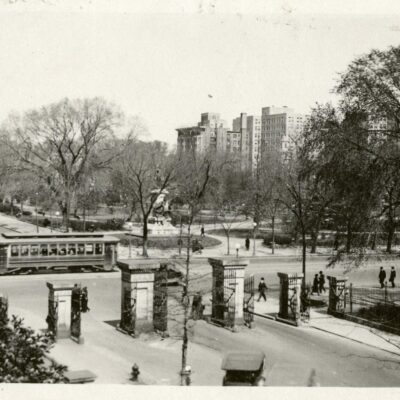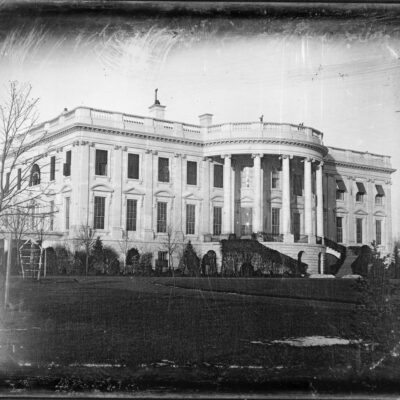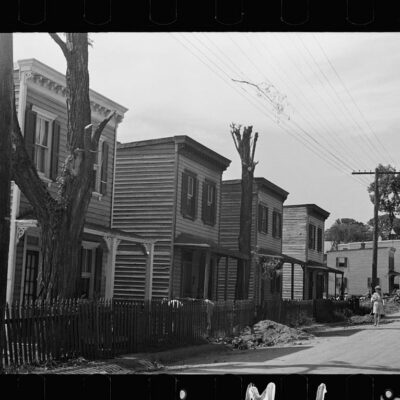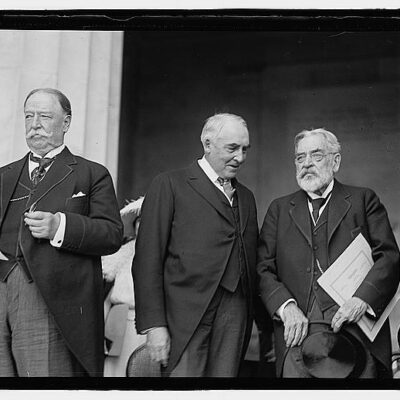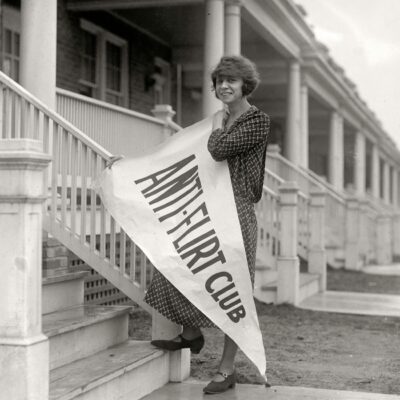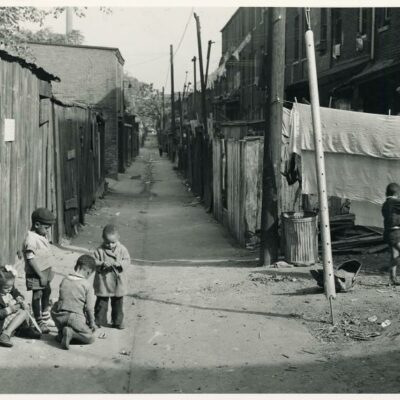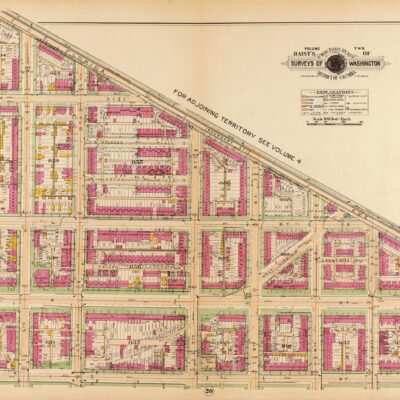You read that correctly. As in Napoleon Bonaparte … that is, Jerome Napoleon Bonaparte III, the great-grandson of Jerome Bonaparte, Napoleon’s youngest brother. Oh, Jerome III was also the great-grandson of Daniel Webster. Impressive lineage.
What set me down this path was the photo below. I came across it on Shorpy and had to figure out the story behind this malcontent teenager.
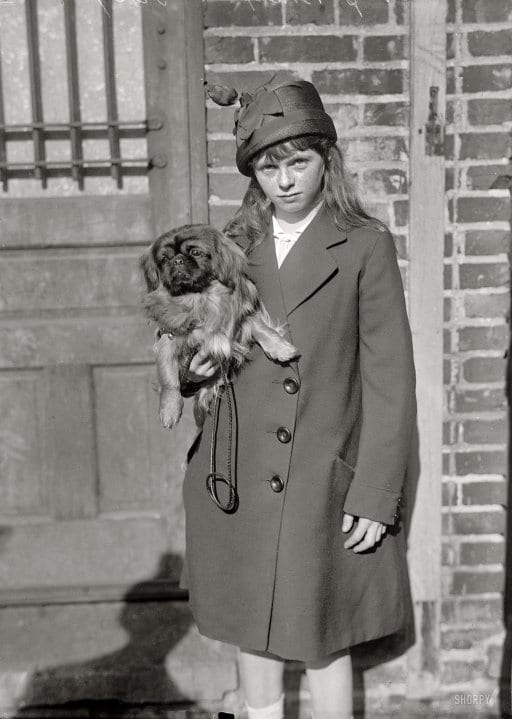
The girl in the photograph is Blanche Strebeigh — she had a twin sister, Barbara — and she is holding the family pet, owned by her mother, Blanche Strebeigh Bonaparte.
The twins were the daughters of Harold and Blanche Strebeigh; the couple divorced in 1914 so Blanche could marry Jerome at City Hall in New York City that same year. The above photo was taken a year later, when the girls were 13 years old (and not looking super psyched).
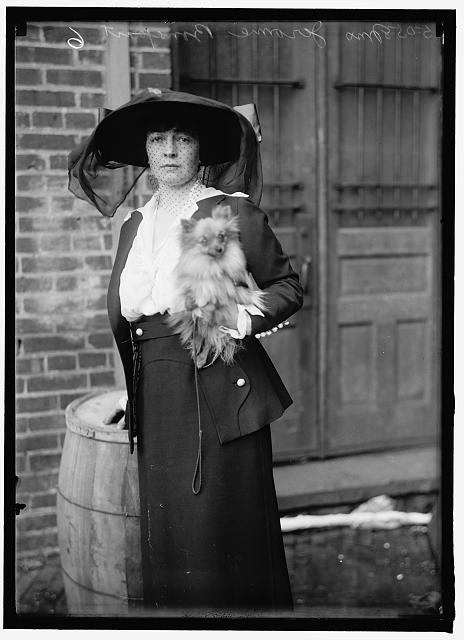
This is where it starts to get very interesting, with ties back to our city.
The Bonaparte family lived in a lavish home on K St. dubbed “Chateau Bonaparte.” Here’s an article I found in the Washington Post from May 15th, 1921.
The house at 1627 K street northwest, called the Chateau Bonaparte, was built by Jerome Napoleon Bonaparte, grandson of the Jerome Bonaparte who was king of Spain, and a brother of the great Napoleon, emperor of France. Jerome Bonaparte, on a visit to America, married Betty Patterson, then the reigning belle of Baltimore society.
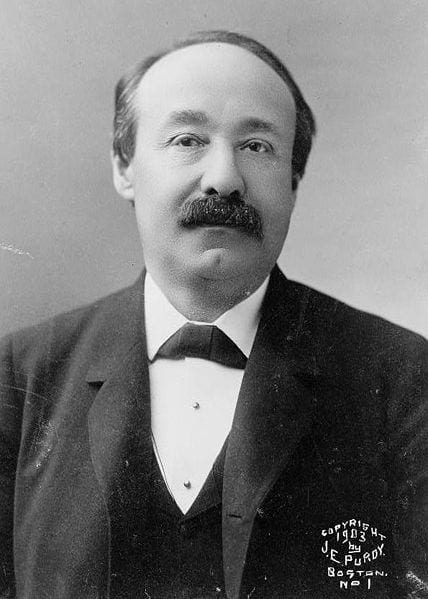
The grandson built the house after his return from France, where he served in several French foreign wars at about the time of the Crimean war … He was a brother of Charles J. Bonaparte, who served in President Roosevelt’s cabinet, first as Secretary of the Navy and later as Attorney General. Mr. Bonaparte made his home at the house built by his brother. It was then the property of his nephew, Jerome Napoleon Bonaparte III.
The building is of brick and stone, and follows the Gothic style of architecture so prevalent in the chateaus of France. The interior arrangements follow the fashion of the period in France, and the crystal candelabra, hand carved brass chandeliers, marble and bronze mantels and mirrors were likewise imported from that country, as were most of the house furnishings. The grand salon and the petit salon are both hung in Parisian satin damask, and the banquet room walls and ceiling are of beamed oak. A broad iron stairway with wrought iron grille winds through a large hallway and logia, and is a distinctive feature of the house. It is painted in bronze and gold and bears the escutcheon of the Bonaparte family.
The house was purchased last summer from Jerome Bonaparte III by Maj. Robert Lee Longstreet on his return from service in France with the A. E. F. He is a son of the famous Confederate general, who, incidentally, was a great admirer of Napoleon and considered him the greatest general of modern times. Gen. Longstreet had all the books published on the life and campaigns of Napoleon in his war library and made regular use of them.
First, I’m sad to say I can’t find a photograph of this home (if you have one, let us know); I imagine it was amazing. Second, this story just gets better. The Bonaparte home is purchased by the son of General Longstreet? You can’t make this stuff up. Why did they knock the building down!
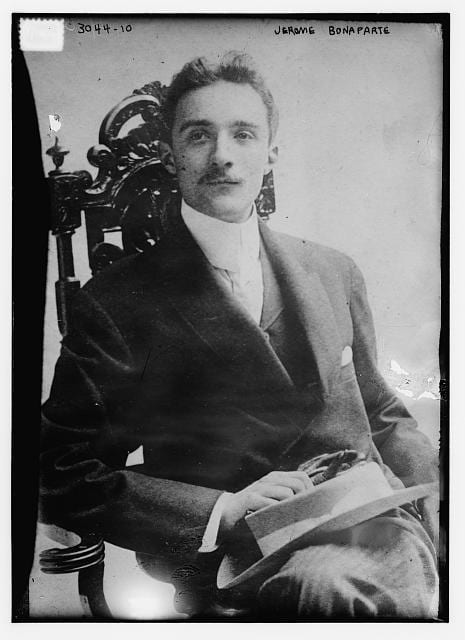
Jerome and his wife Blanche were the last of the Bonaparte clan to live in the home, which had a number of other Bonapartes living in it. It was originally constructed and lived in by Jerome’s father (i.e., Jerome Bonaparte II). He passed the home to his brother, Charles Bonaparte, Teddy Roosevelt’s Secretary of the Navy (and later Attorney General)
By the way, how many of you knew that a direct descendant of Napoleon served in the Cabinet? I certainly did not.
On November 20th, 1911, just before Thanksgiving that year, the Baltimore Sun reported that Mrs. Caroline Leroy Bonaparte, wife of Jerome II, had passed away at the age of 72. The article details some very fascinating connections throughout the Bonaparte family.
Mme. Bonaparte’s connection with the Baltimore members of that distinguished family makes an interesting story. She was a sister-in-law of Mr. Charles J. Bonaparte, the well known Baltimore lawyers and former Attorney-General of the United States.
She enjoyed the distinction of having married a grandnephew of the great Napoleon, who “held Europe in the palm of his hand,” but refused to permit his brother Jerome to retain his American wife, Miss Elizabeth Patterson, a noted beauty and daughter of William Patterson, of this city. Mr. Patterson was a man of great wealth, which he made in large part through his line of sailing ships plying between this port and Europe.
The paternal great-grandmother of the present Jerome N. Bonaparte, of this city, was Miss Elizabeth Patterson, of Baltimore, whose marriage to Prince Jerome Bonaparte, the youngest brother of Napoleon I, made a most interesting chapter in Franco-American history. It took place on Christmas Eve, 1803, with Bishop John Carroll, of Baltimore, afterward Archbishop, officiating. A civil marriage also took place.
The marriage was furiously opposed by the father of the bride, William Patterson, a merchant of Scotch-Irish extraction. Jerome Bonaparte went to New York in command of a French frigate and to Baltimore to visit a friend. He was introduced to Miss Patterson, who was not only beautiful, but had most fascinating manners and many accomplishments. His offer of marriage was made through the Spanish Minister, and, not withstanding the opposition, the fair bride-elect declared that “she would rather be the wife of Jerome Bonaparte for an hour than any other man for life.”
After a year spent in this country, the couple embarked for France, but Mme. Bonaparte was prevented from landing by command of Napoleon, who would not recognize the marriage. Mme. Bonaparte sought refuge in England, where a short time afterward her son, Jerome Napoleon Bonaparte, was born. Her husband, after vainly endeavoring to have Napoleon recognize his wife, married again by dictation of the imperial will.
Mr. Pitt, the British Premier, paid Mrs. Bonaparte special honor, to emphasize the tyranny of the man who ruled over the French with an iron hand. Mme. Bonaparte returned to Baltimore in a short while and lived at her father’s house until after Napoleon’s defeat at Waterloo. When the news of this downfall reached her she and her young son started at once for Europe, where they were well received. The Duke of Wellington, who so decisively vanquished her brother-in-law, was one of her greatest friends, and so was the Marquis de Talleyrand and the famous Mme. de Stael.
Remarkably enough, in the same year–1824–when Mrs. Bonaparte returned once more to Baltimore, her sister-in-law, Mrs. Robert Patterson, one of the beautiful Caton sisters, was married to the Marquis of Wellesley, brother of the Duke of Wellington, Mrs. Bonaparte’s stanch defender and admirer.
Wow. The Duke of Wellington was close friends with the disregarded wife of Napoleon’s younger brother? I also did not know that. This is good stuff.
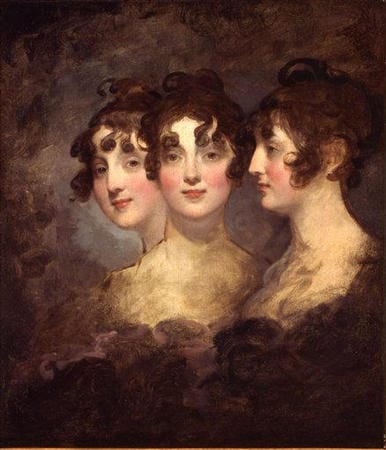
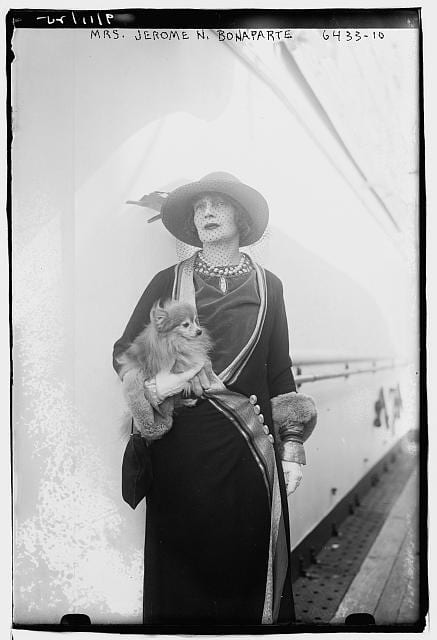
I was able to dig up another document of interest. On September 12th, 1918, Jerome registered with the local Washington draft board and listed his residence as 1627 K St. NW and his next of kin as Blanche Bonaparte, his wife.
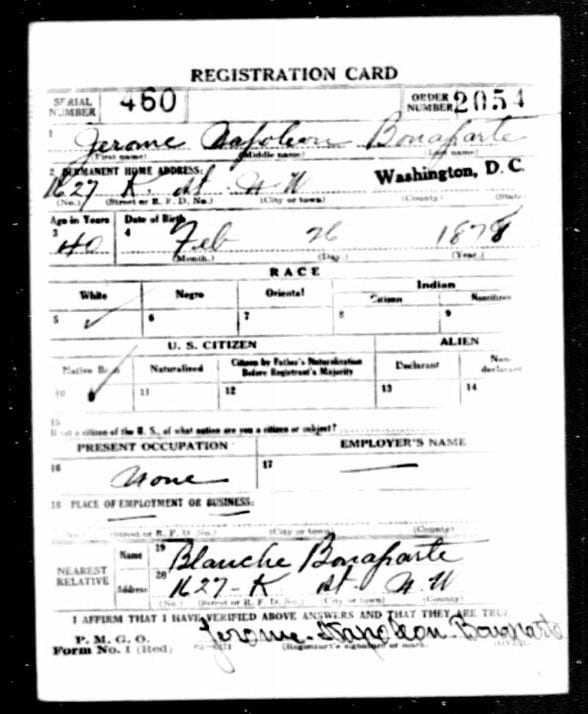
If you found this article fascinating, why not follow us on Facebook or Twitter (@GhostsofDC).
